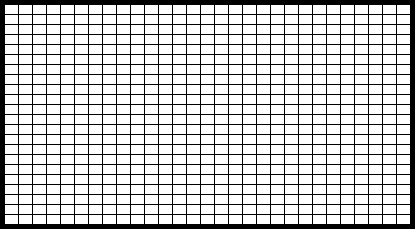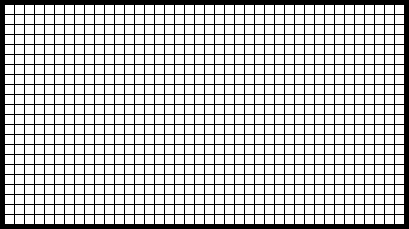The XL H1 Watchdog
Introduction
|
> top of page < |
Canon XL H1 Image Sensors, DSP and Frame Rates
by Chris Hurd
The CCD block in the XL H1 utilizes three one-third inch 1.67 megapixel CCD image sensors which provide an effective target area of 1440 x 1080 pixels. Canon does not manufacture CCD image sensors, and they will not divulge the identity of the vendor supplying them. Canon states only that the imagers are a new design made to their specifications. Each CCD has a native 16:9 shape. The 1440 x 1080 dimension is the same matrix used in Sony HDCAM camcorders. Like the preponderance of most all 3CCD blocks these days, Pixel Shift technology is employed in the horizontal axis. The advantage of Pixel Shift offset is that it provides more sampling points when converting the analog voltage output from the CCD block into a digital video signal.
The individual photosites on a typical 1440x1080 sensor are not square pixels, but anamorphic in shape. Commonly referred to as non-square pixels, they each have a PAR (pixel aspect ratio) of 1:1.333, which allows an HDTV monitor to display this HD signal properly as 1920x1080 (all HDTV displays use square pixels, or a PAR of 1:1). Basically, the CCD target area pixel matrix is anamorphic in nature due to the PAR value of 1.333 of each pixel. The width of the matrix and its non-square pixels is displayed through the square pixels of an HDTV monitor. In mathematical terms, this can be expressed as (1440 x 1.333) x 1080 = 1920 x 1080. While any HDTV monitor will properly scale this signal automatically to 1920x1080, it is important while editing HD video from the XL H1 to set the Pixel Aspect Ratio of your video editing software to 1:1.333. In other words, an HDTV knows what to do with non-square pixels, but your editing software might not.
The non-square, anamorphic pixels of a 1440x1080 CCD.
An HDTV uses square pixels. The signal created by the anamorphic pixels of the CCD block are properly scaled and displayed at 1920x1080.The XL H1's DSP (the digital signal processor, which is the brain of the camcorder, much like the CPU in a computer) is Canon's own proprietary technology referred to as Digic DV II. Digic was initially created for the Canon digital still photography camera lines of PowerShot digicams and Digital-SLR EOS camera bodies as the world's first photography-specific DSP. Digic DV is an expanded version of Digic, intended for video applications. With the introduction of the second-generation Digic DV II for the XL H1, the latest iteration of Digic technology is now engineered for HD video processing. Digic DV II also allows for parallel image processing for simultaneous still photo recording plus HD video output. In addition to its normal 60i (sixty interlaced fields) for HD video output, it also provides the optional HD frame rates of 30F and 24F (thirty full frames per second and 24 full frames per second, respectively).
The Canon 30F and 24F frame rates and the technology which creates them are related in no way whatsoever to the current Sony HDV implementations known as CineFrame 30 and CineFrame 24 (which have been commonly referred to as CF30 and CF24). Instead, the Canon 30F and 24F frame rates constitute a "new and improved" version of Frame Movie mode, based on a technology originally developed by Panasonic and adapted by Canon in 1997 for the first XL series DV camcorder, the XL1. This updated version of Frame Movie mode is nearly identical to the 30P and 24P results produced by progressive scan CCDs. The Canon XL H1 CCD block is interlace, not progressive, therefore the 30fps and 24fps frame rates cannot be referred to technically as 30P and 24P. However, 30F and 24F from the XL H1 appear almost indistinguishable from 30P and 24P, as they are basically the same results as progressive scan, but produced by different means. When the XL H1 is set to Frame recording, the CCDs are actually clocked at 24 frames per second. The video signal remains at 24fps as it is passed from the CCD block to the baseband LSI, and through the HD Codec LSI. Only when it reaches the recording output stage is it resampled to 60i via a 3:2 pull-up method.
In the 1080/50i European version of the XL H1, Frame recording is available in the 25F frame rate only. Customers who buy either the 60i or 50i version of the XL H1 may opt to send their camera to Canon factory service for an upgrade to full switchability between both 60i and 50i modes. The choice appears as a new menu item, and selecting it will toggle from one mode to the other. The camera then reboots into the chosen mode, providing either 60i, 30F and 24F, or 50i and 25F. The frame rate switch on the left side of the camera body is androgenously labeled as "i, F1, F2" so as to be agnostic with regard to either operating mode.
The Digic DV II DSP also controls simultaneous 2MP still photo recording to a removeable SD flash memory card on the XL H1 up to five shots per second. These still images are direct captures from HD video and are printable at a choice of images sizes including 1920x1080, 1440x1080, 840x480 and 640x480. Exif data is carried with the image and each image file includes TimeCode and Custom Preset information. The still photo record function is a handy tool for checking continuity, matching camera setups and general video production management. There is an option for still image recording intended for print, processed in 256 colors, or recording for video with data settings, processed in 216 colors.
At this point in time Canon is choosing not to disclose the bit depth of the Digic DV II DSP.
Back to the XL H1 Articles Menu.
Thrown together by Chris Hurd.
Please direct questions to the DV Info Net Community Forums.
Where to Buy: These dealers are authorized DV Info Net sponsors... | |||
|
|
|
|
|
|
|
|
Please support this site by making your purchases through them. Thanks! | |||
©1998-2008 DV Info Net
The Digital Video Information Network
San Marcos, Texas
For every action there is an equal and opposite government program.


